.jpg)
.jpg)
.jpg)
.jpg)

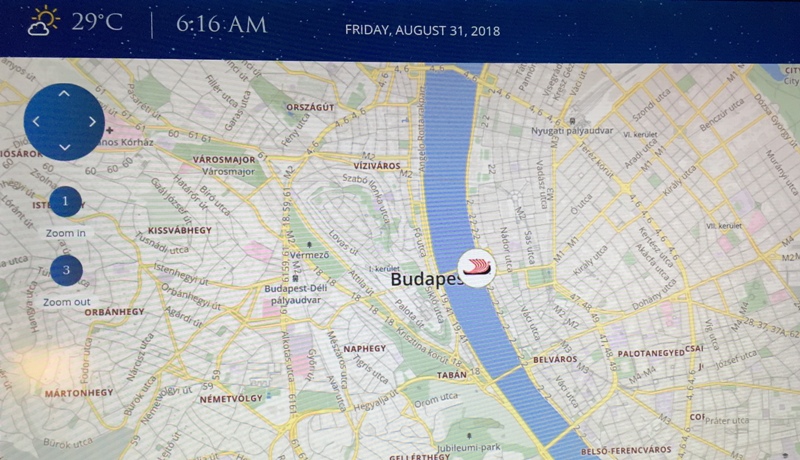
Things about the city: (1) Even though Budapest may seem like it’s been around forever, it’s actually the result of a somewhat recent merger (1873) between two cities – Buda on the western bank of the Danube and Pest on the east. Both sides think they’re the best, of course, and it took some deliberation to agree on the name. Which, by the way, is correctly pronounced Buda-pesht. (2) No building can be taller than 96 meters- You won’t see any skyscrapers or high-rises in the newer developments of Budapest. Although the city is rich with incredibly intricate architecture, two very historic buildings have the honor of being the ‘tallest building.’ Both of them are exactly 96 meters high, and this is no accident. The number 896 signifies the year that Hungarian Magyars first settled in the region.
To begin with, here is a view from our hotel room of Budapest East side. Click on the image to see it bigger. The bridge you see is called the Elisabeth Bridge.

Getting ready to see this city
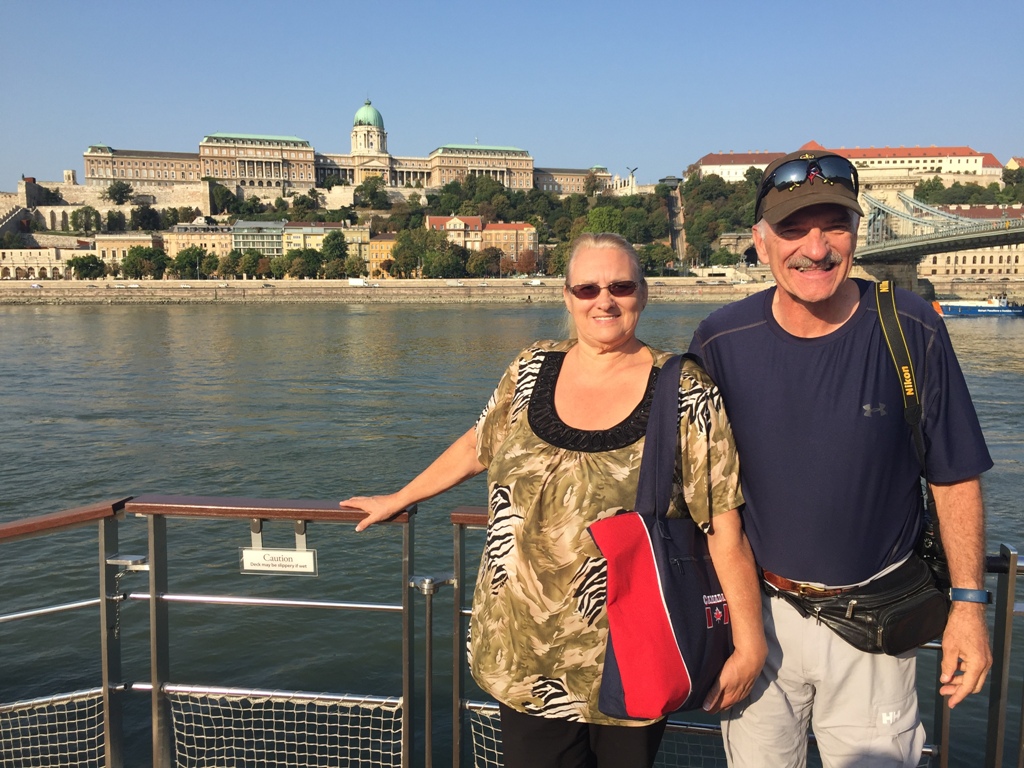
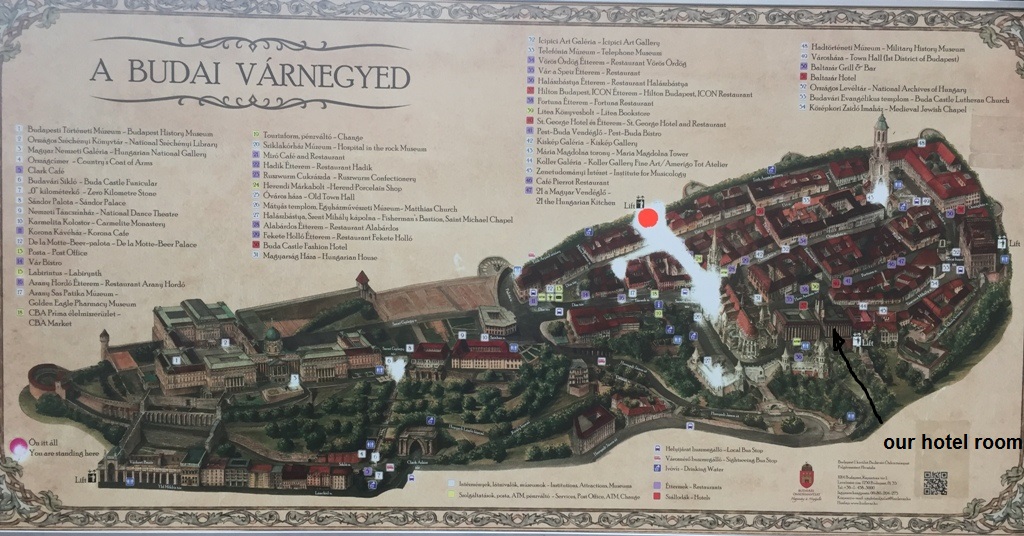
Before I get too far, we were given our hotel room. We were staying at the Hilton. Here is what I saw from the window of our hotel room (see drawing above for our hotel room location). Needless to say, we were impressed and happy to be there. What a beautiful view.
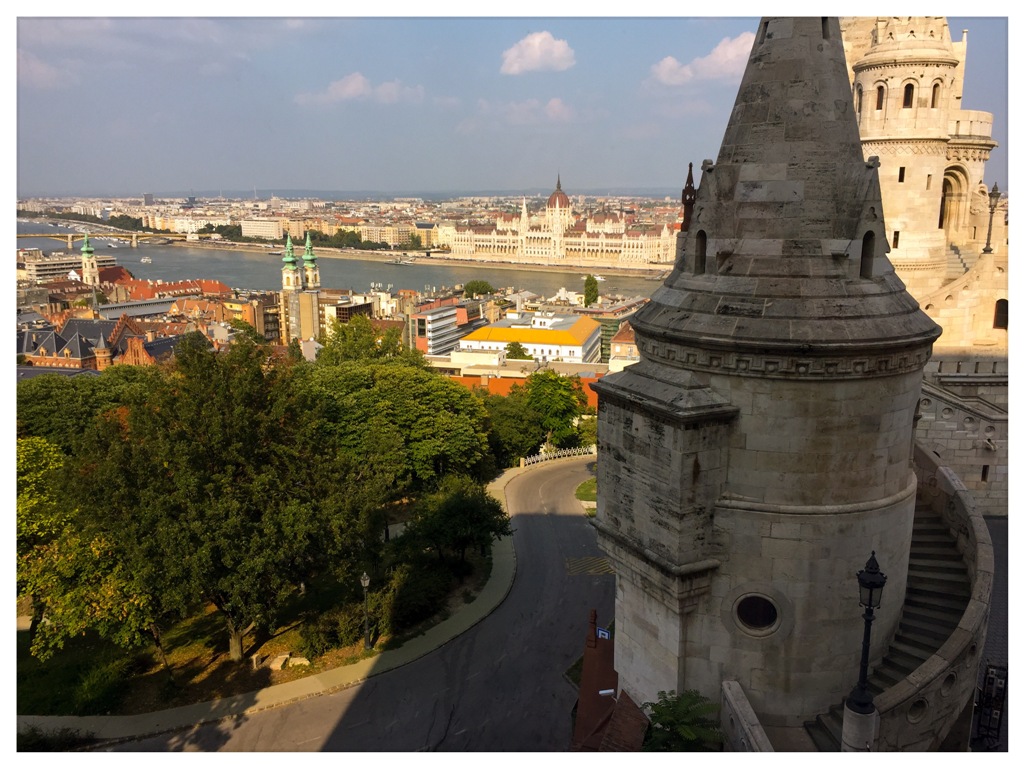
Elisabeth Bridge is the third newest bridge of Budapest, Hungary, connecting Buda and Pest across the River Danube. The bridge is situated at the narrowest part of the Danube in the Budapest area, spanning only 290 m.
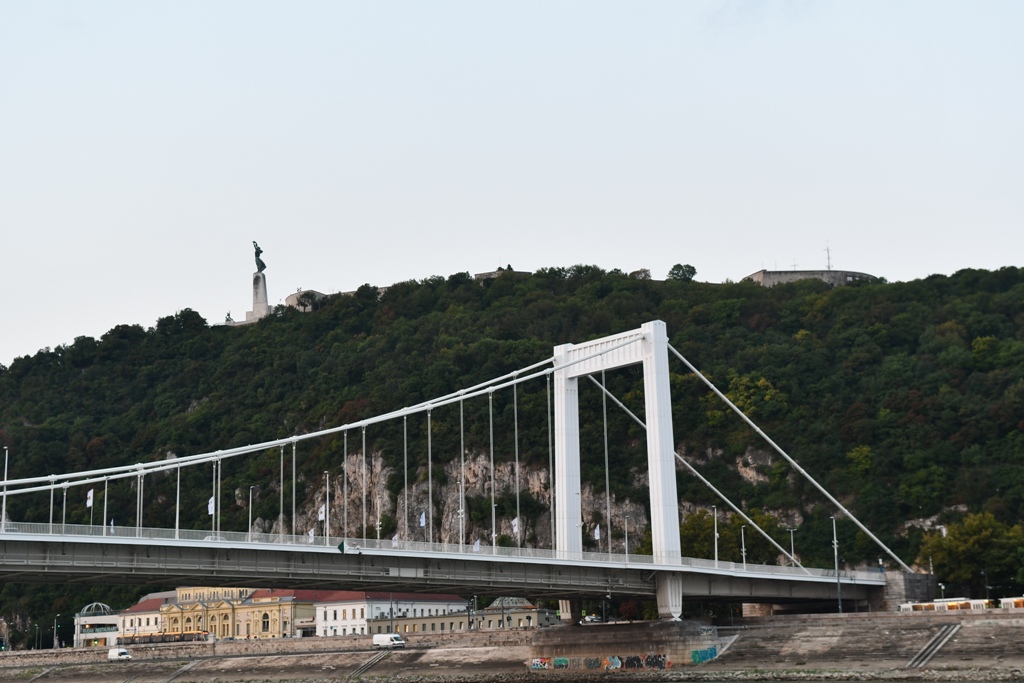
Gellért Monument has a stellar view but a grisly background. St. Gellért was on a pilgrimage to Palestine when he was detained by King Stephen to help convert the pagan Magyars to Christianity. Gellért agreed, although he lived to regret it. Or rather, he didn’t. After the king died, he was no longer under the protection of the palace, and was captured by the pagans. They were slightly pissed off at his conversion tactics, and showed their displeasure by stuffing him into a spike-filled barrel and rolling him down the hill.A monument was later erected at the exact spot where he met his death. It can be seen from all over Budapest and provides one of the best views in the city. The monument also depicts heathen Magyars looking up in awe at the Saint, so I guess you can say he got the final word in.
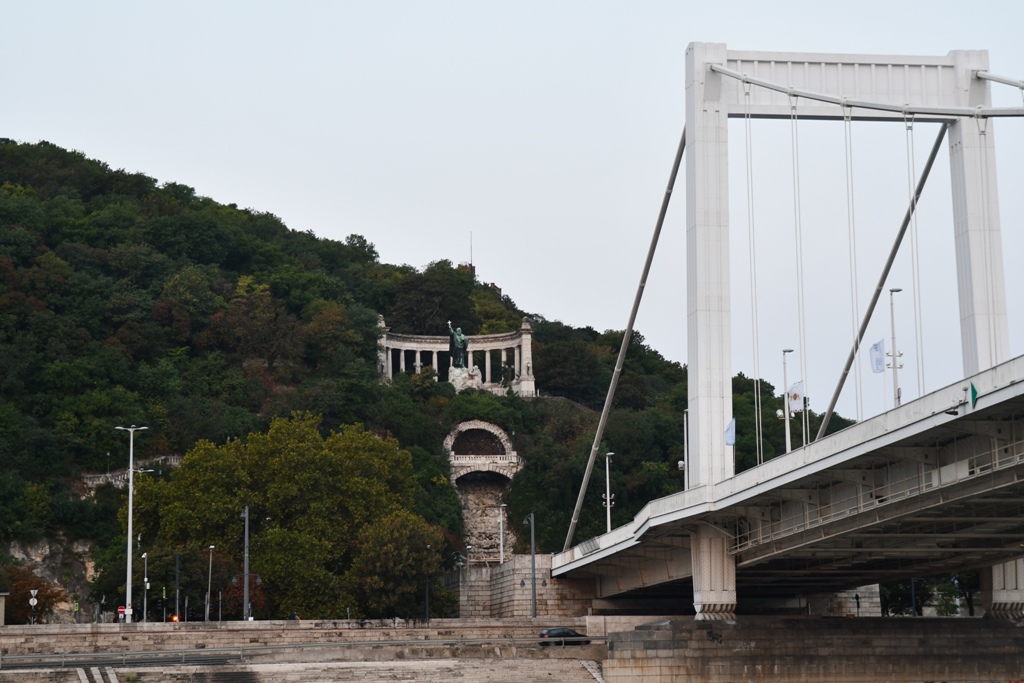
This one is called the Liberty Bridge. It is the third southernmost public road bridge in Budapest, located at the southern end of the City Centre. It was originally named Ferenc József híd (Franz Joseph Bridge). I crossed this bridge to walk to the Great Market Hall.
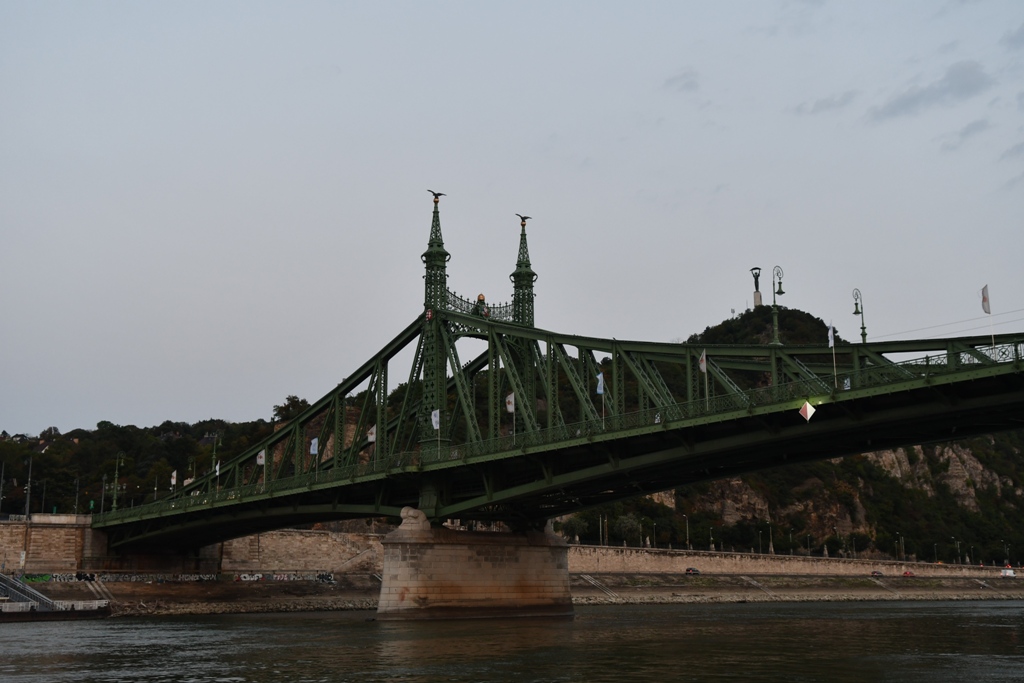
The Pauline Monastery of the Kőszeg is a ruin of a medieval Pauline monastery at the border of today's Salföld village on the Ábrahám hill on the Balaton Uplands . The original church was probably not the result of the architectural work of the Pauline Order, but the monks took up an existing Roman chapel, which was subsequently expanded according to their own needs by enclosing them. The rebuilt church is already bearing the marks of the peculiar construction style of the Palatine Order: the church building is oriented to the east, and the monastery is connected to the north.
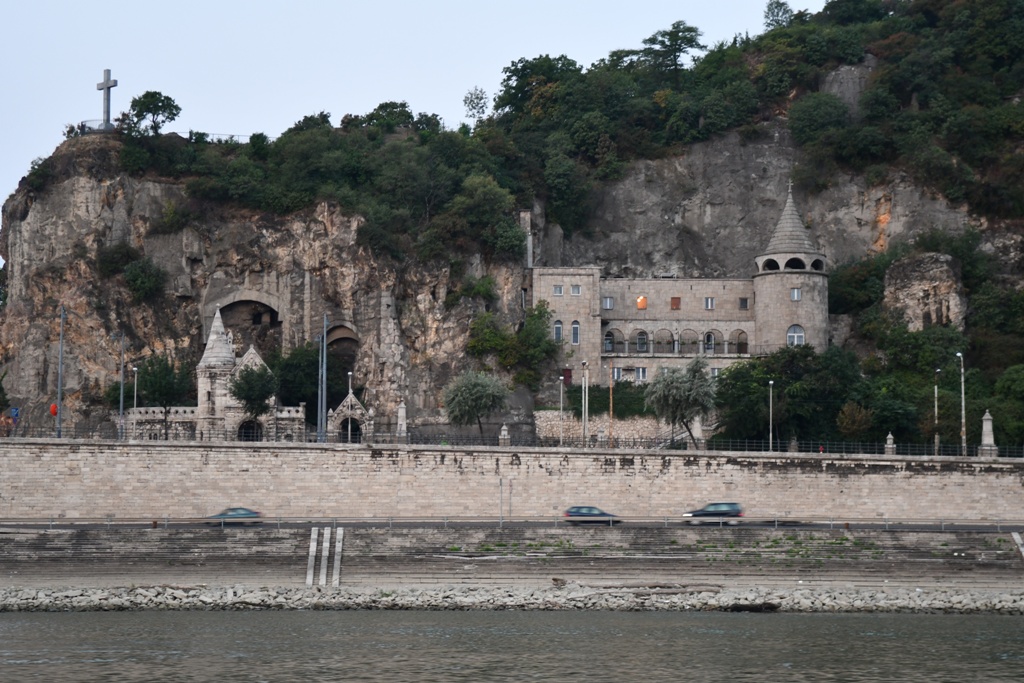
We had a tour around Budapest. We were thoroughly impressed with the city. This was our first time visiting this magnificient city.
The statues of the four lions, carved by János Marschalkó, guard each end of the bridge. Legend has it that he spent YEARS studying lions in their natural habitats so as to carve the most perfect statues ever created. Before unveiling the lions he boasted to anyone who would listen that his statues were flawless. He said that if anyone could find a flaw in his work he would kill himself.

Unfortunately for him, the story says that one day a young boy was overheard to have asked his father loudly where the tongues were on the lion statues. Upon realizing that he had forgotten this crucial point, Marschalkó jumped from the bridge, thus becoming the first official suicide. (This rumor has been proven completely false as the lions do, in fact, contain tongues. You can only see them from a high angle because they are behind the teeth.)
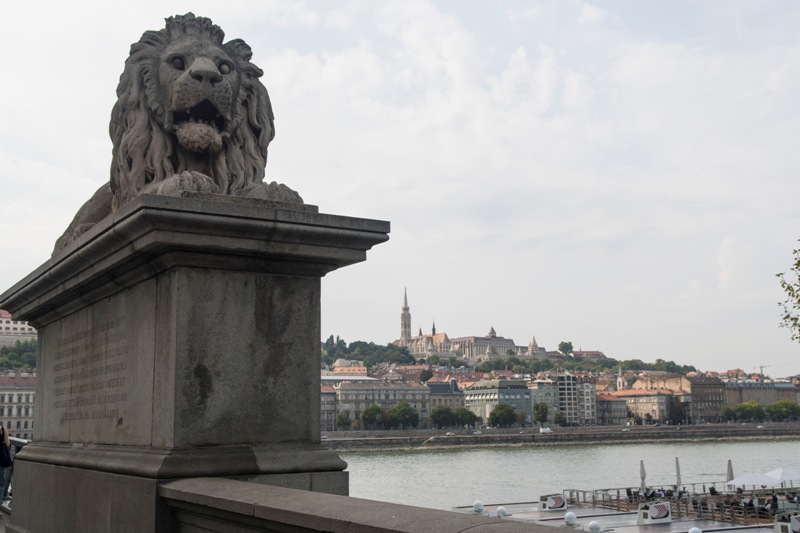
Translated Szabad Hazaert means free motherland. The statue was erected as a tribute to the Hungarian freedom fighters who fought in the war of independence against Austria. The metal statue is of a soldier with a laurel wreath from the winged Victory and the national flag. At the base of the statue, is a wreath with a ribbon engraved with the words “Freedom or Death”. The memorial is located in the Castle district of Budapest, on the Buda side of the Danube and not far from Matthias Church.
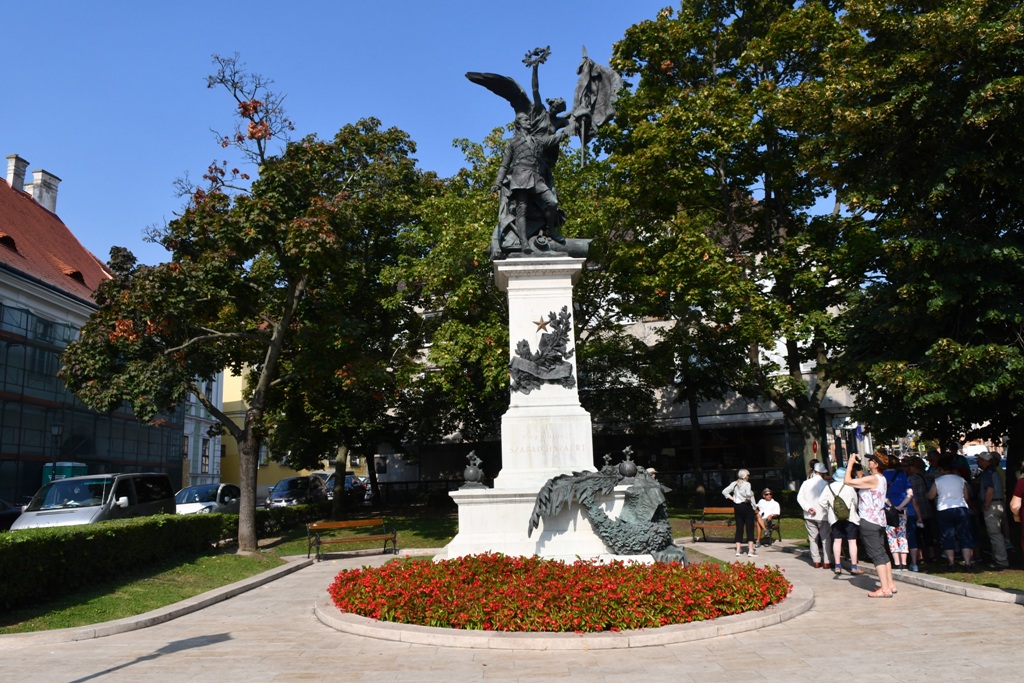
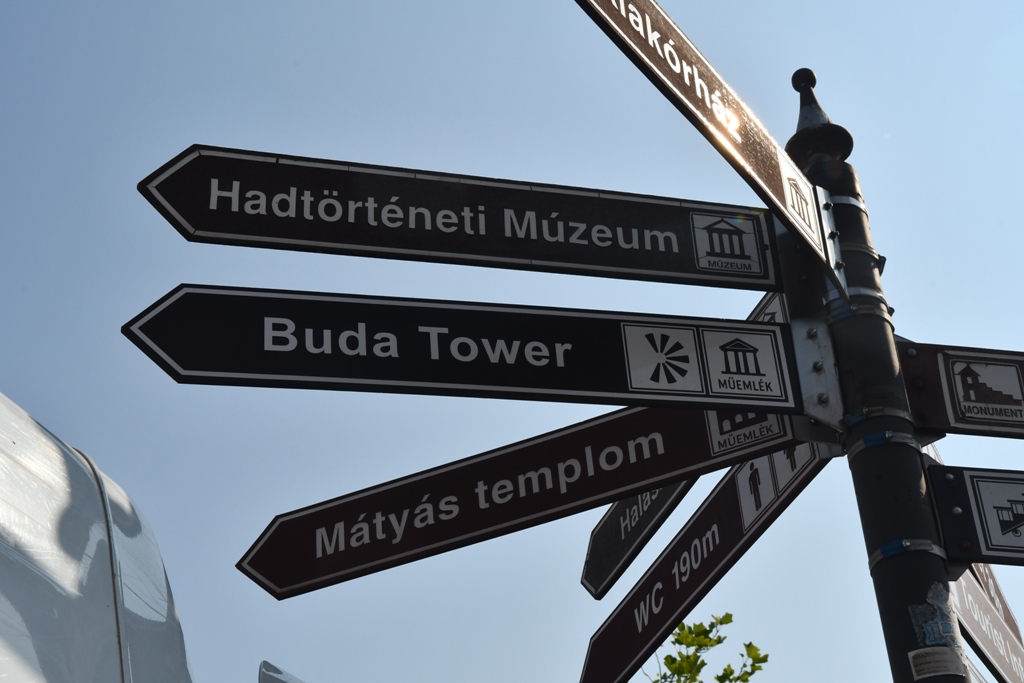
Matthias Church is unlike many of the typical churches dating back to the Middle Ages. Matthias Church (officially called the Church of Our Lady, but all locals call it “Matyas Templom”) . Instead of St Matthias, the name of the church refers to King Matthias Corvinus the Fair, who remodelled and expanded the building in Gothic style in the 15th century, adding the southern high tower, called Matthias bell tower.
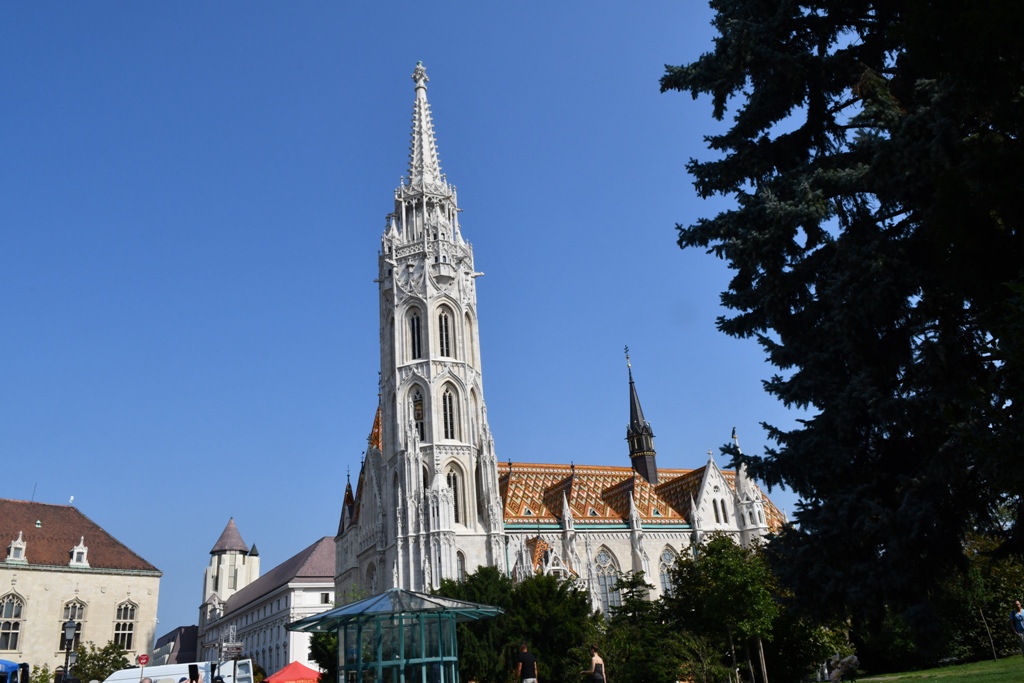
The church was used as a coronation church by Hungarian kings for centuries, also a mosque for over 150 years by the Ottoman Turks, once owned by Franciscans, Jesuits, now a thriving Catholic church with holy masses, concerts, plenty of weddings, thousands of tourists. The graceful architecture and stunningly rich, all embracing wall paintings of the majestic building will leave you speechless.
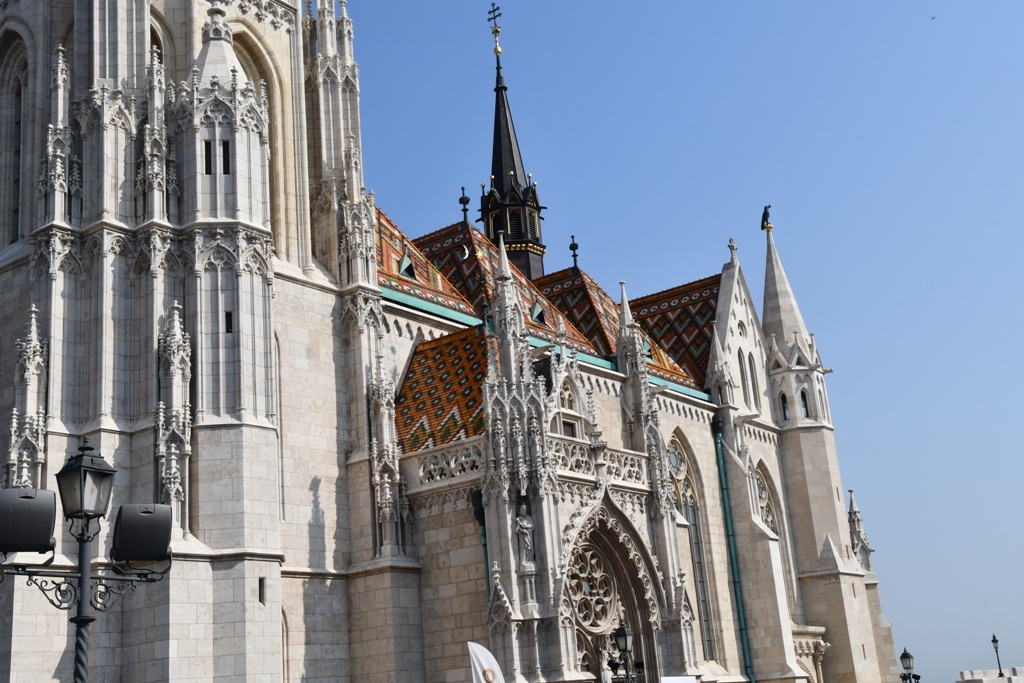
While the outside of Matthias Church offers the historical beauty of traditional Gothic churches with delicate turrets, the coloured tile roofs already give away that this church is not following the usual recipe
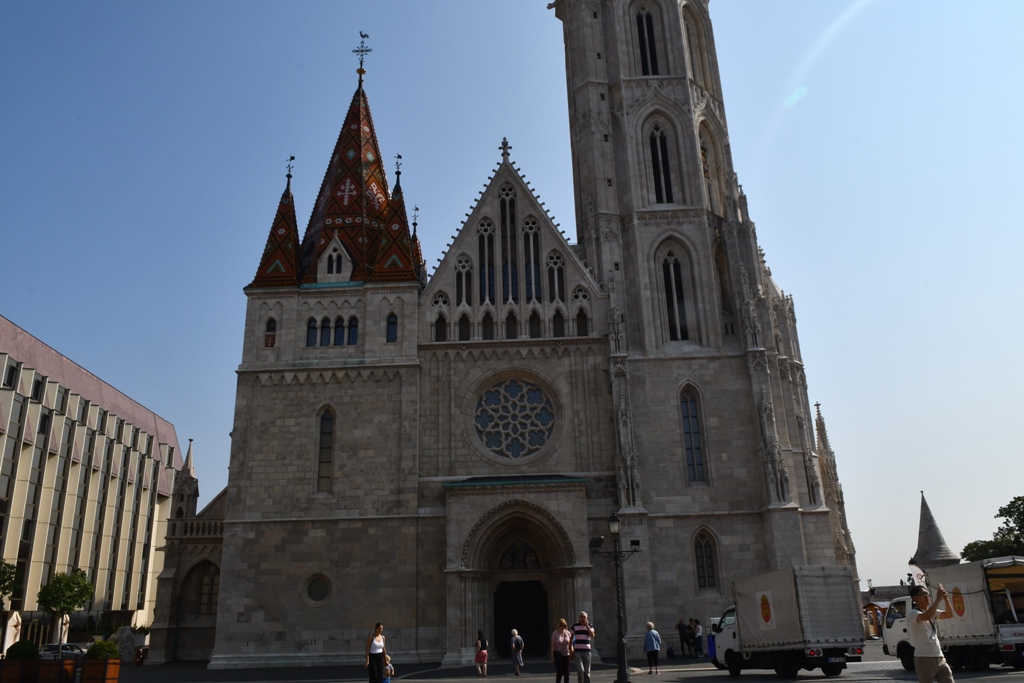
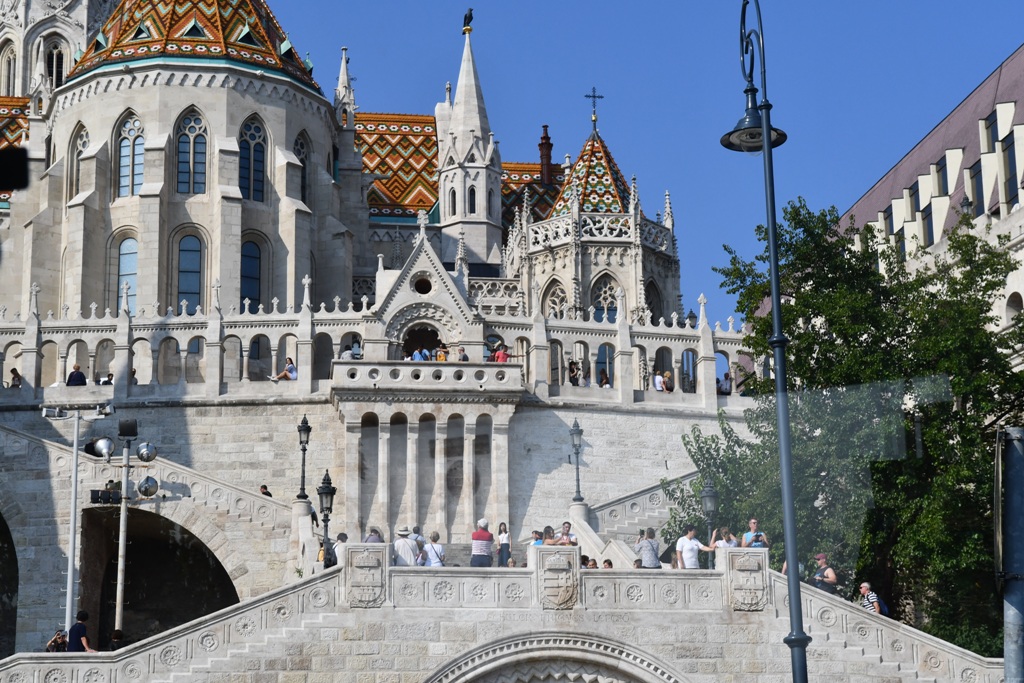
inside the church you will experience one of the most welcoming combinations of warm lights, shadows and colours with orange, brown, golden hewed frescos reaching from floor to ceiling, beautiful stain glass windows, far reaching arches, century old wooden pews, medieval remnants. Matthias Church (officially called the Church of Our Lady, but all locals call it “Matyas Templom”) has quite the history and a story to tell.
According to historians a church called Church of Mary stood on the site of the current building founded by Saint Stephen, the first king of Hungary in 1015.
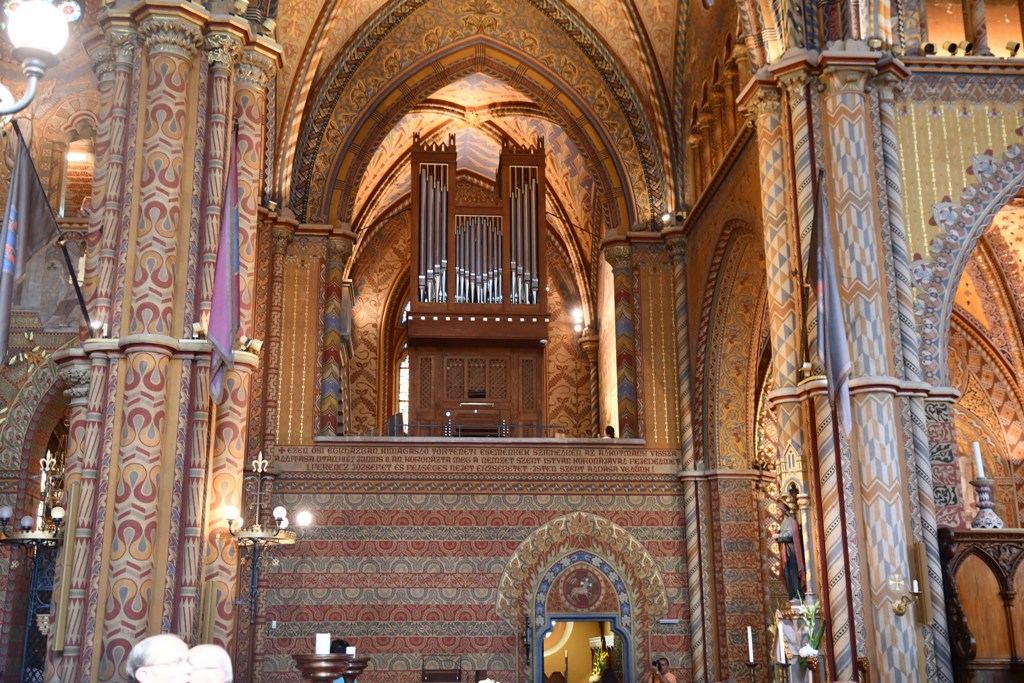
In 1526 the Turks occupied Buda, ruined most of the churches, but left the Church of Our Lady erected and turned it into a mosque. Artefacts were taken away, ornate furnishings were destroyed, altars and paintings were covered with whitewashed brick walls.
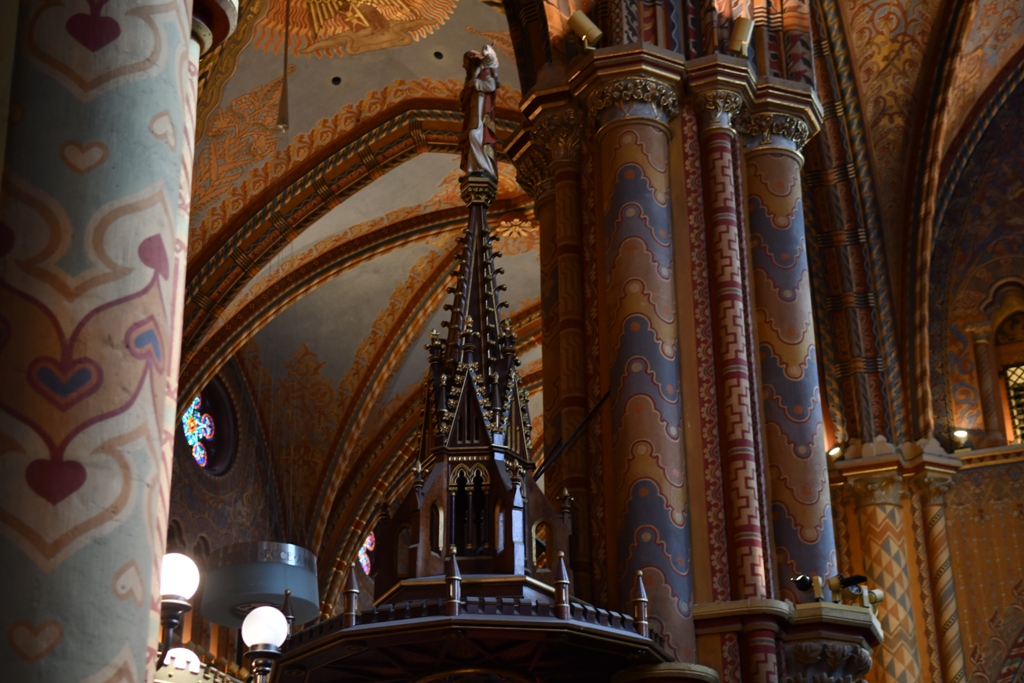
The pulpit of the church was built between 1890 and 1893 during the extensive reconstruction of the building. It was designed by Frigyes Schulek with the help of art historian Béla Czobor who contributed to the draft of the iconographic plan. The statues were carved by Ferenc Mikula, the abat-voix was made by Károly Ruprich.
The pulpit was built of sandstone, and the surfaces are entirely covered with Neo-Romanesque ornamental painting including the statues. There is a wrought-iron rail at the bottom of the steps. The Gothic Revival abat-voix, resembling a medieval tower, was carved of oak and the statue of the Good Shepherd on the top was made of linden. The platform of the pulpit is supported by an outer ring of arches and a massive central pillar. The most interesting part of the structure is the sculptural decoration of the parapet with the statues of the four evangelists and the four Latin doctors of the church standing under the arches of a blind arcade.

When the Christian mercenary troops led by Charles V, Karl V. Leopold imperial generalissimo re-gained the Buda Castle from the Turks, not much survived the Ottoman years by the end of the siege of Buda in 1686. After the Turkish era, a new church was constructed on the remains in Baroque style.
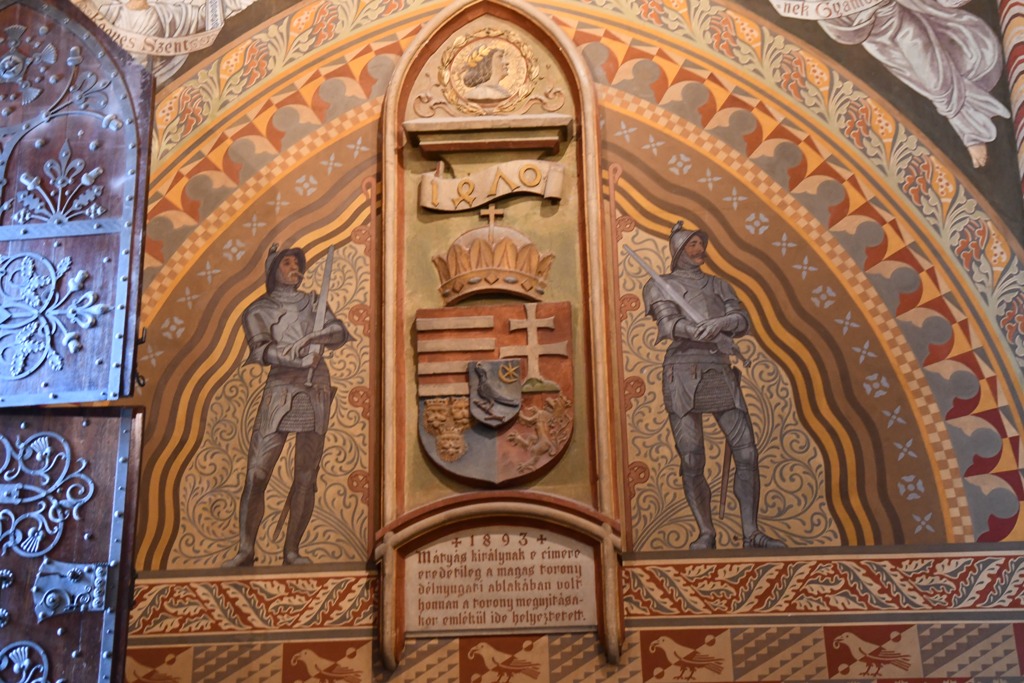
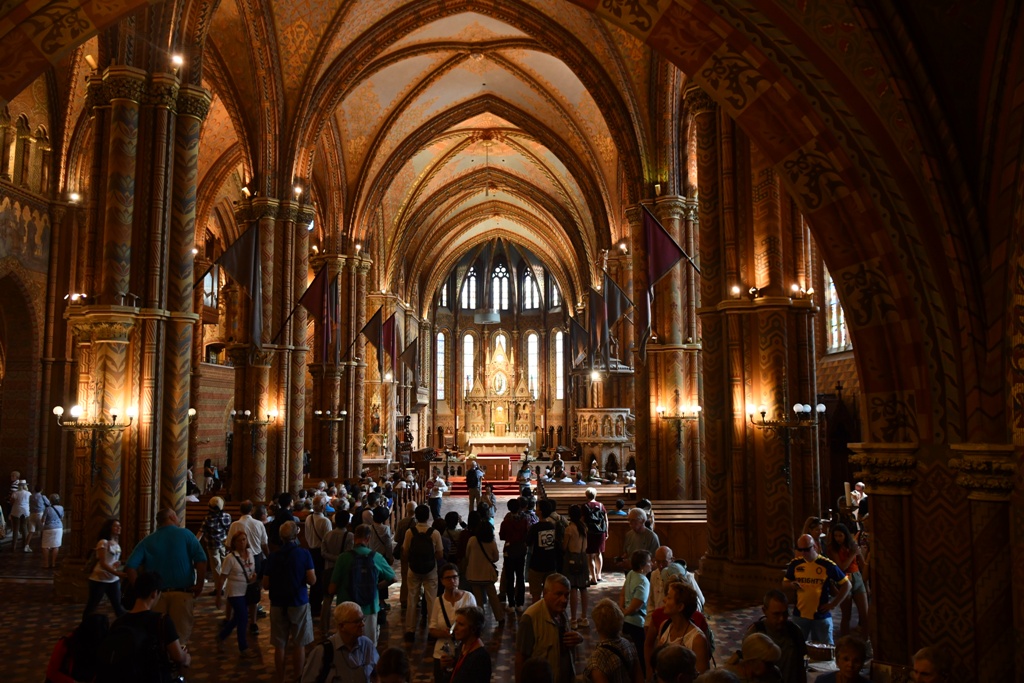
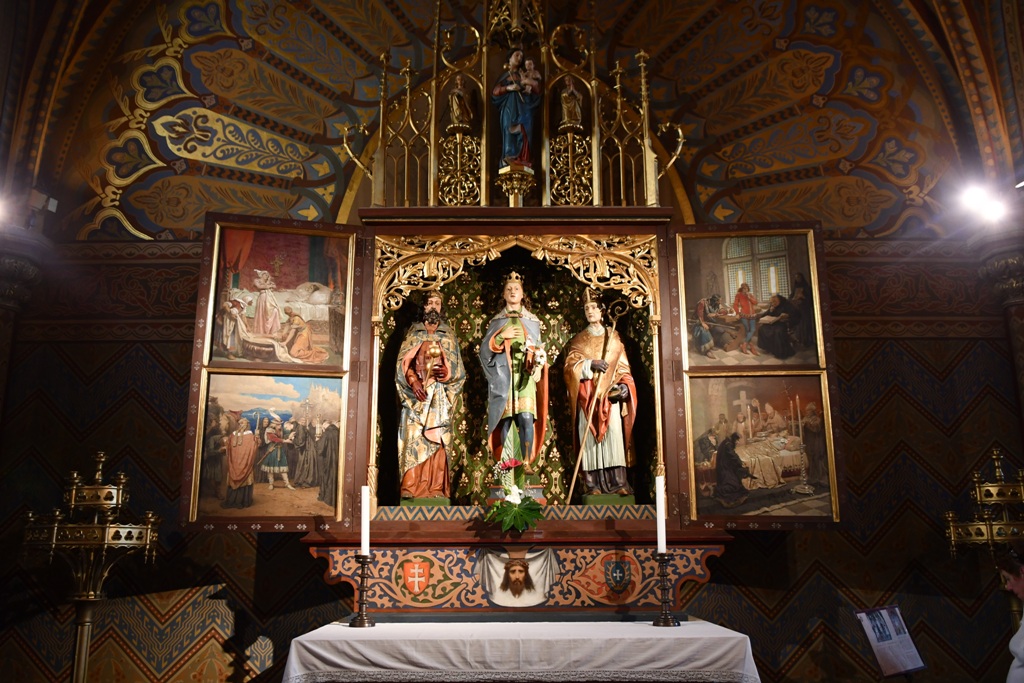
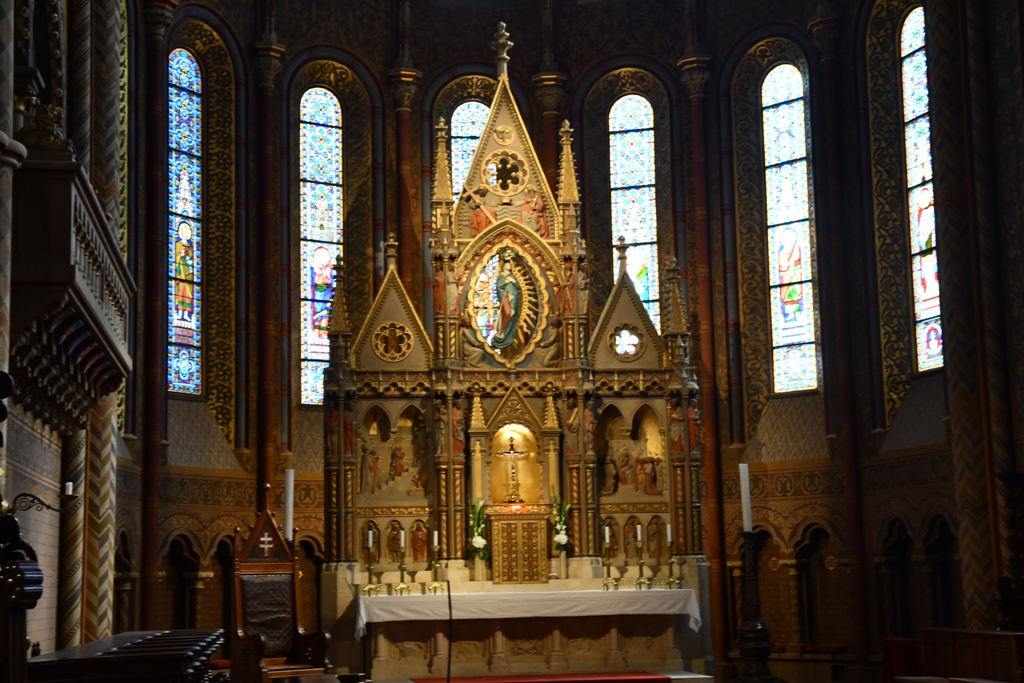
I can't find any reference to the story the tour guide told us, but it seems the moors cut off the heads of the statues but they were later repaired once the moors were chased away. The photo below is what the repair (showing the historical damage by the moors) and the photo below this one shows what it all looked like.
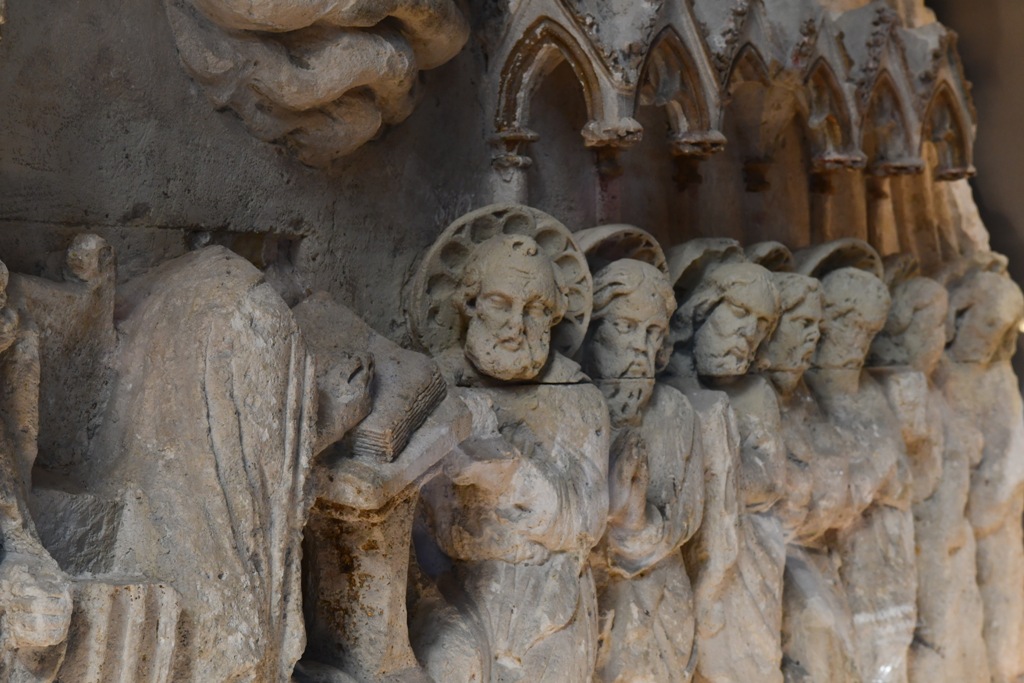
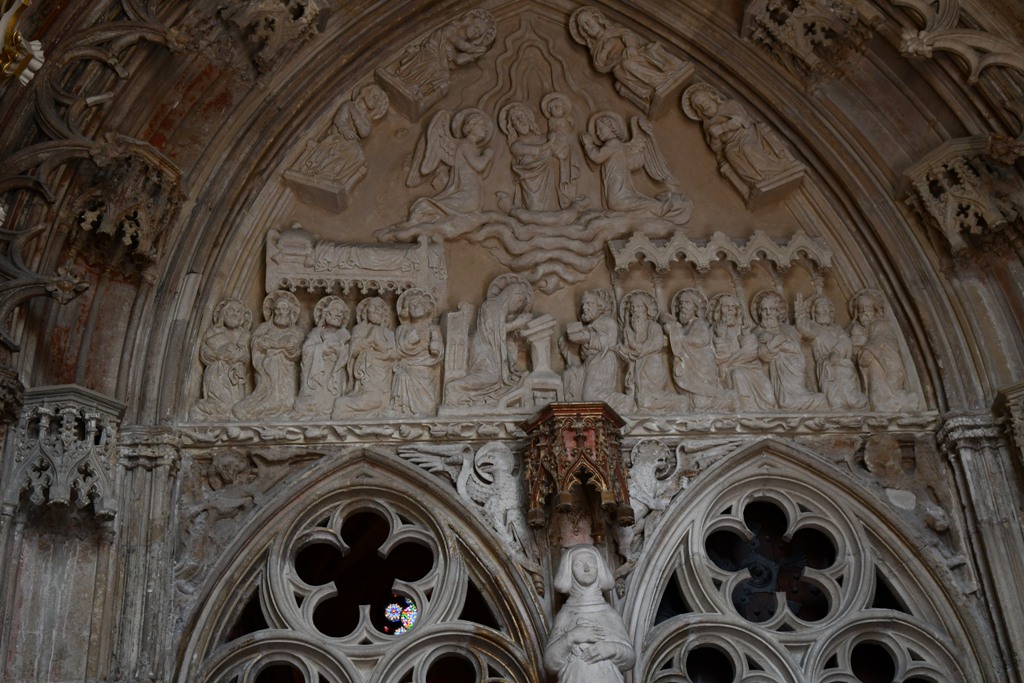
The Holy Trinity Column in Olomouc, in the Czech Republic is a Baroque monument (Trinity column) that was built between 1716 to 1754. The main purpose was to celebrate the Catholic Church and faith, partly caused by feeling of gratitude for ending a plague, which struck Moravia (now in the Czech Republic) between 1713 and 1715.
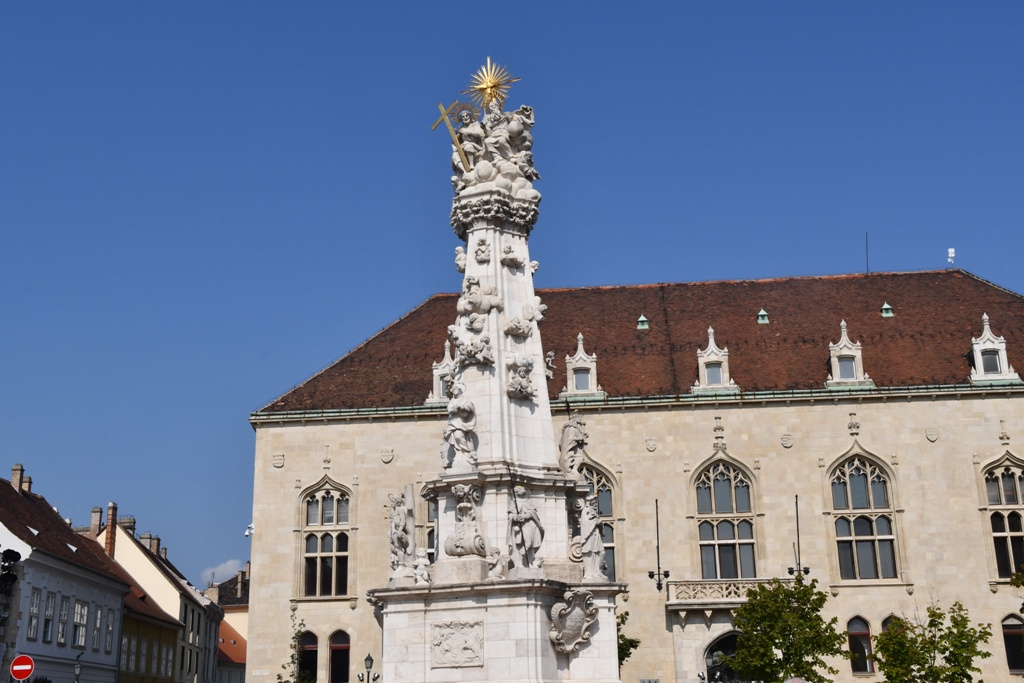
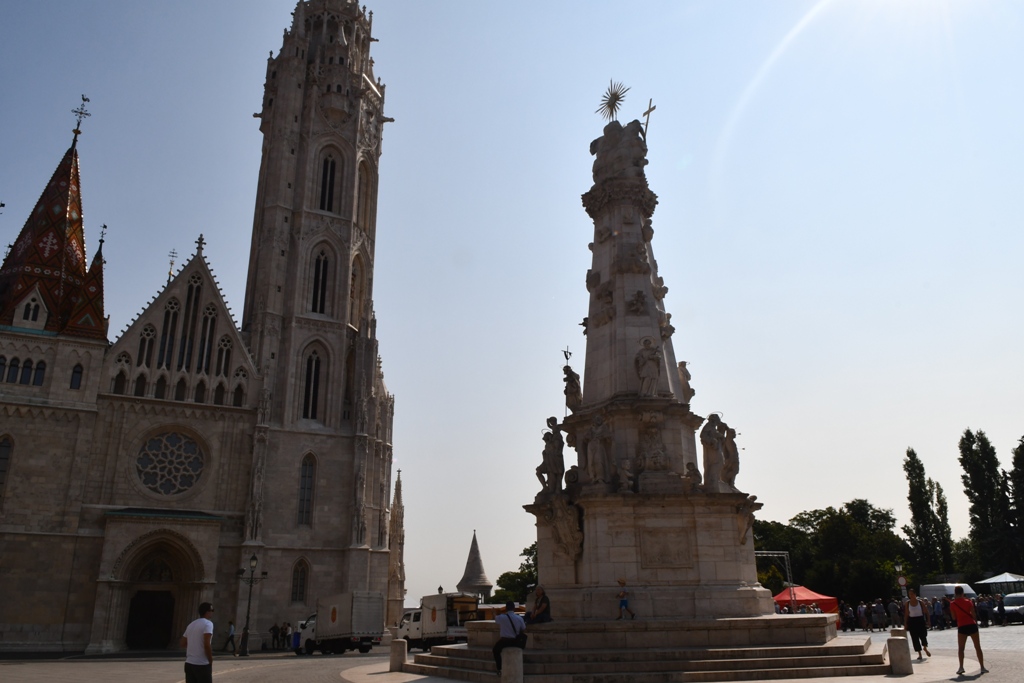
The Liberty Statue or Freedom Statue, commemorates those who sacrificed their lives for the independence, freedom, and prosperity of Hungary. It was first erected in 1947 in remembrance of what was then referred to as the Soviet liberation of Hungary during World War II, which ended the occupation by Nazi Germany. Its location upon Gellért Hill makes it a prominent feature of Budapest's cityscape. At the time of the monument's construction, the defeat of Axis forces by the Red Army was officially proclaimed “liberation”—leading to the original inscription upon the memorial (both in Hungarian and Russian) -"To the memory of those all who sacrificed their lives for the independence, freedom, and prosperity of Hungary".
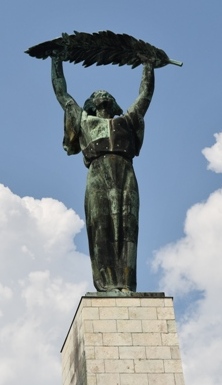
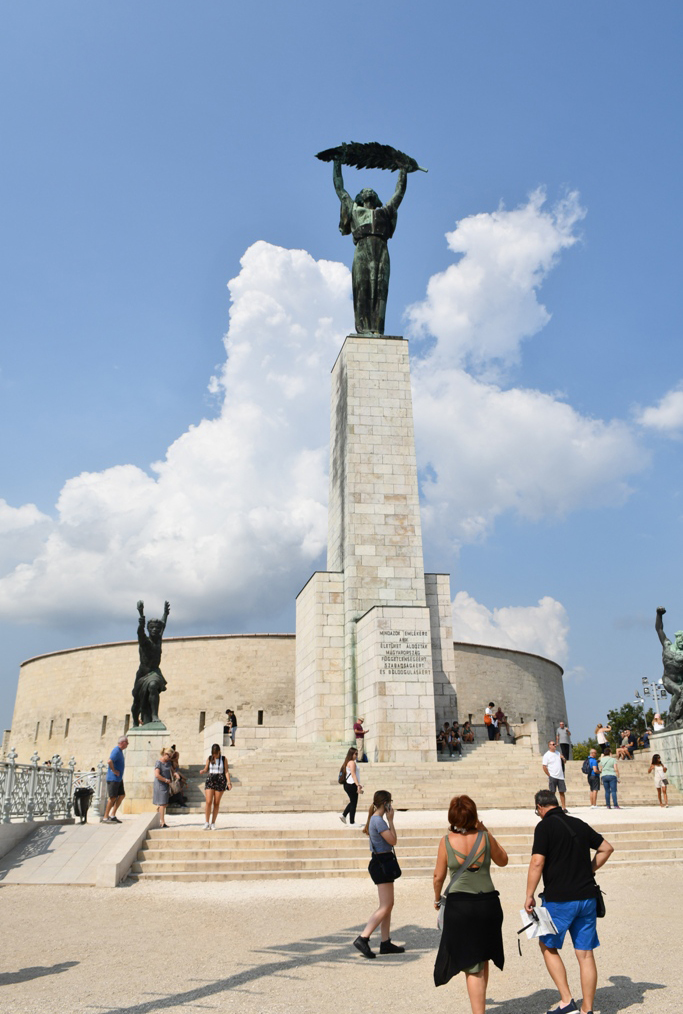
Sharon and I turned and took a selfie looking down
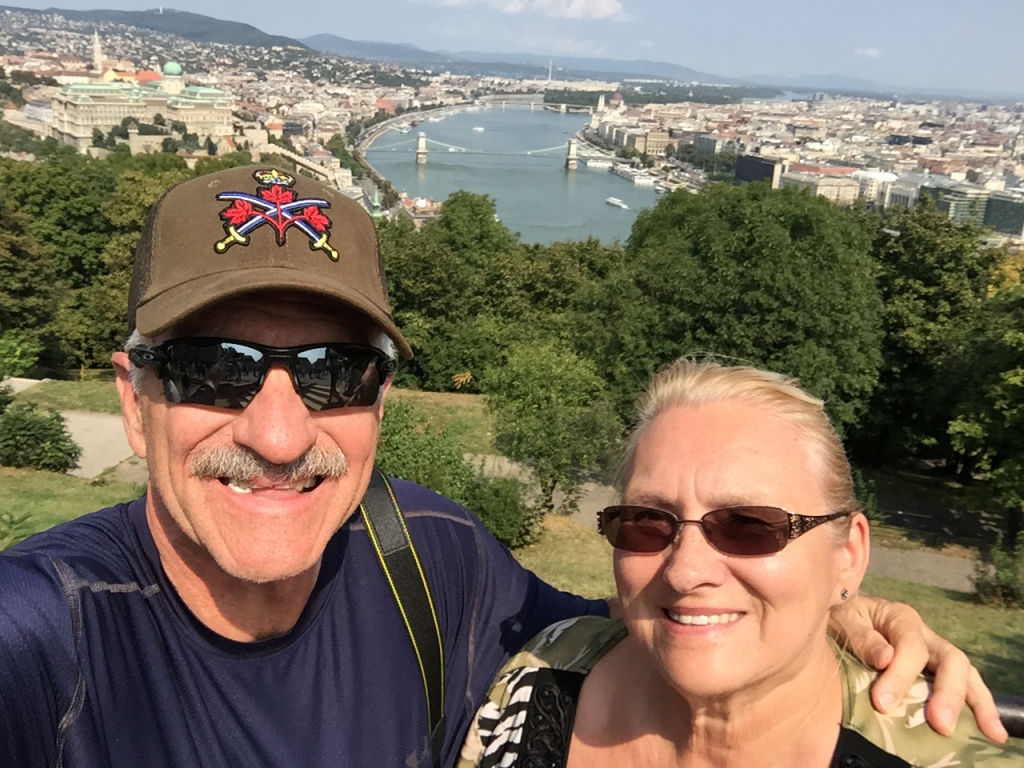
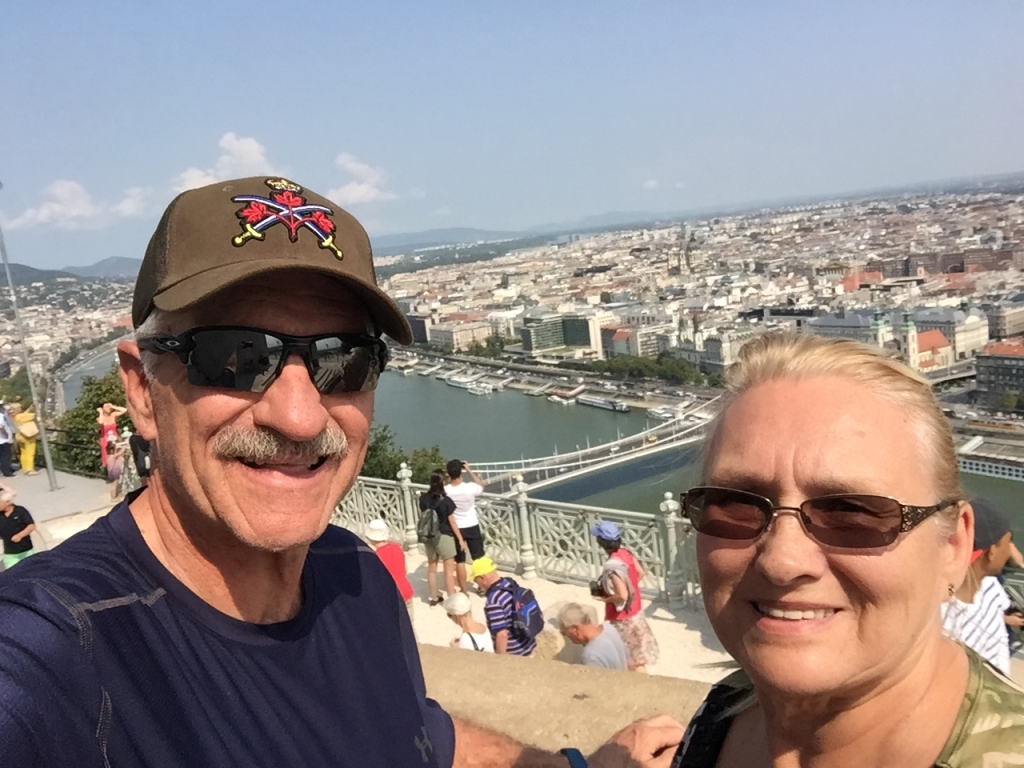
This is Great Market Hall in Pest side of Budapest. It is located at the end of the famous pedestrian shopping street Váci utca and on the Pest side of the Liberty bridge at Fővám square.
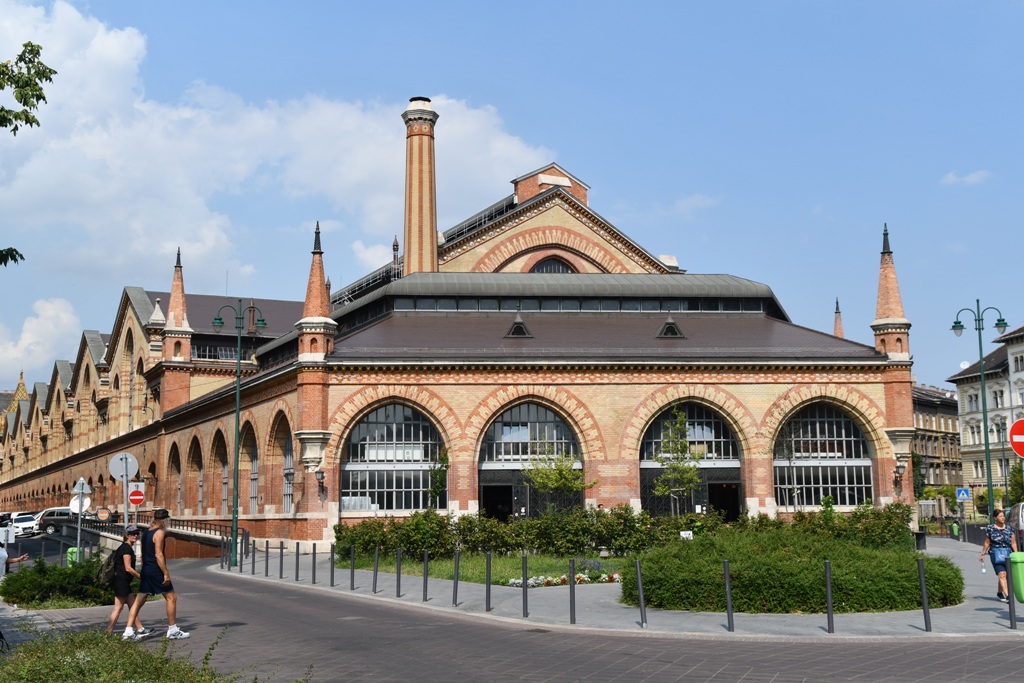
Here we are entering the Market
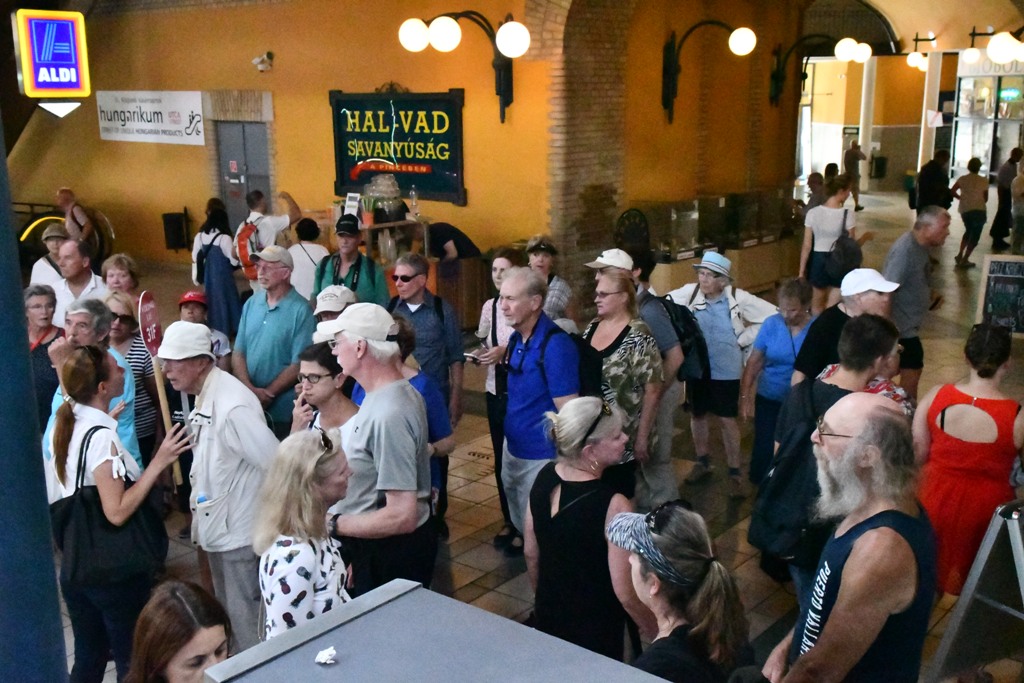
Again a meat vendor
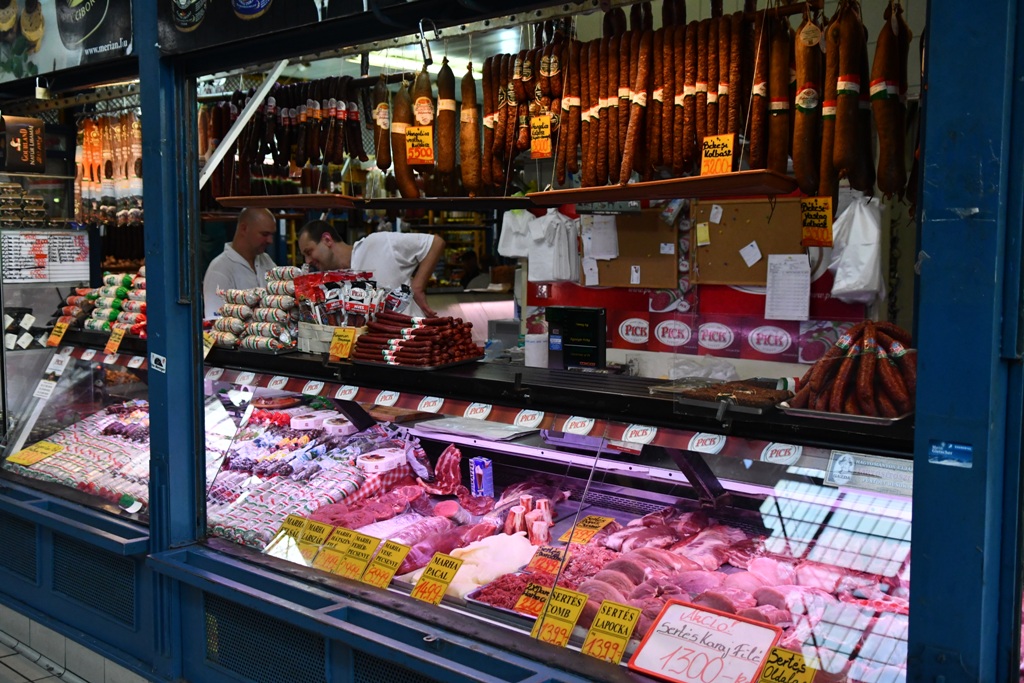
Having been to the Grand Bazaar in Istanbul, Sharon and I found this one to be "tame" but nice.
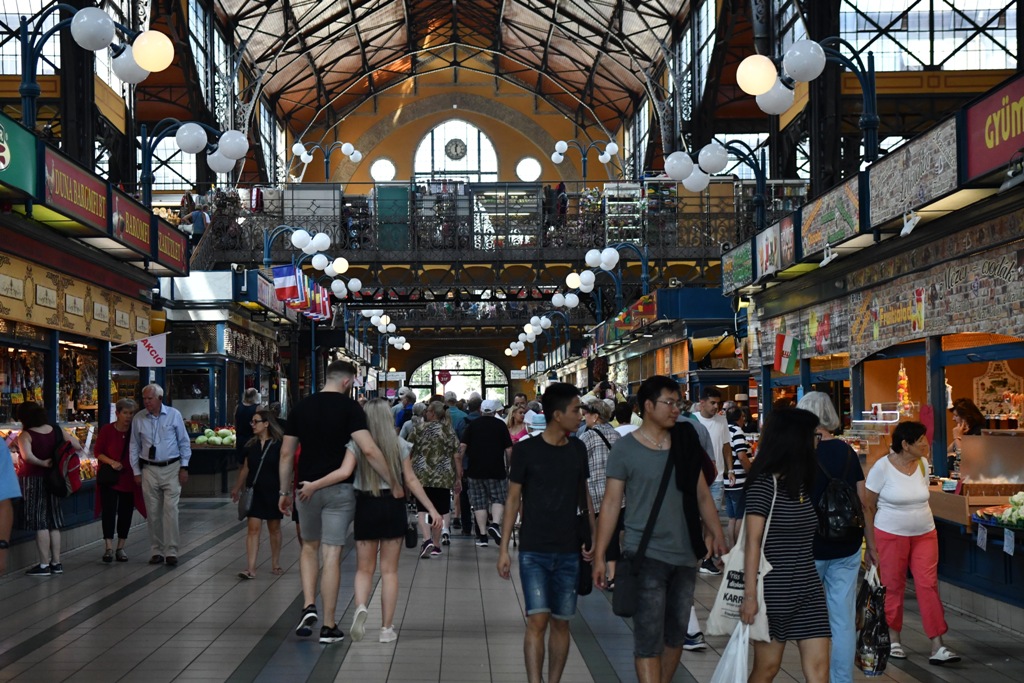
Paprika plants for sale
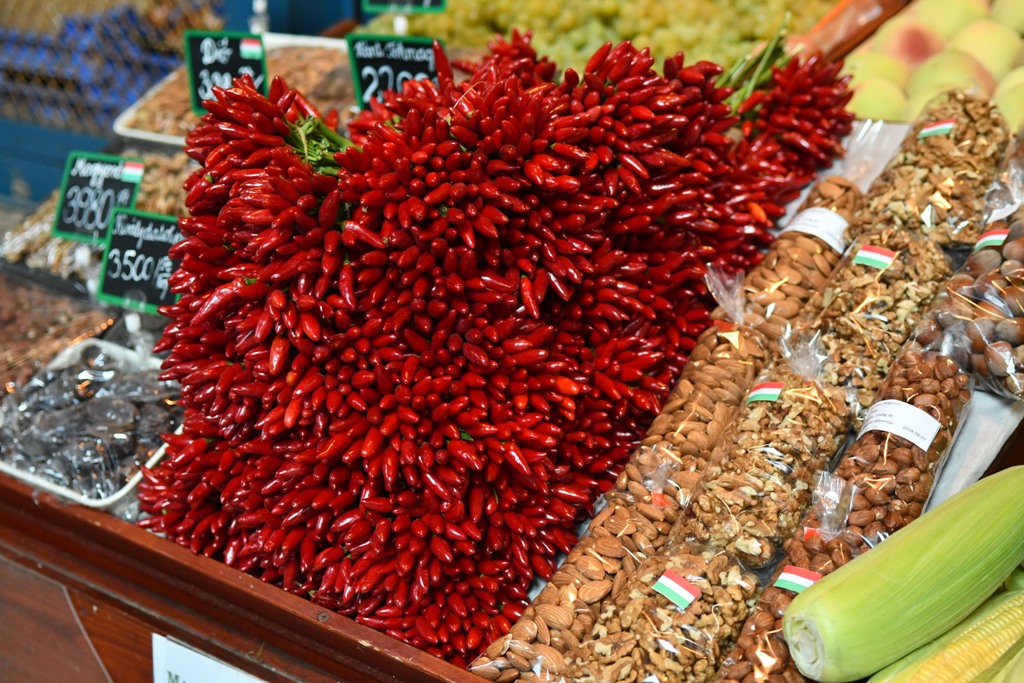
This is the other entrance to the Market. We were going down the commerical street to look for something "Hungarian" to eat.
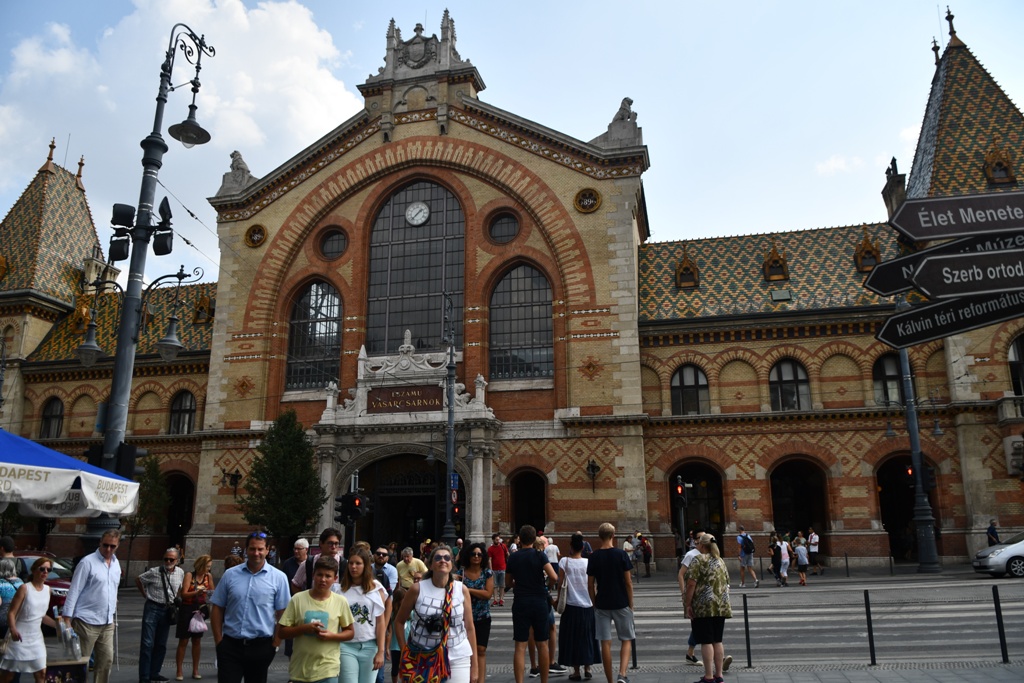
We found an excellent resturant on the strip for a lunch
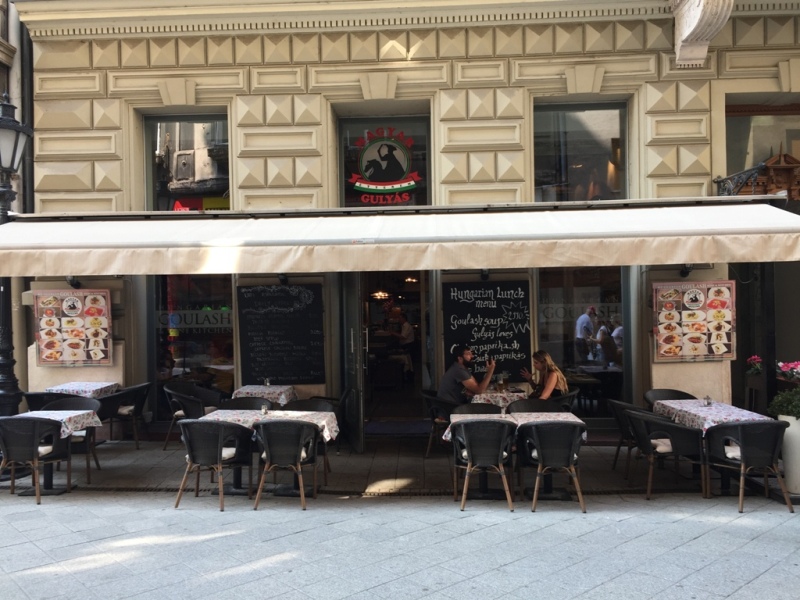
The advertisement of Hungarian Goulash brought me to the chairs
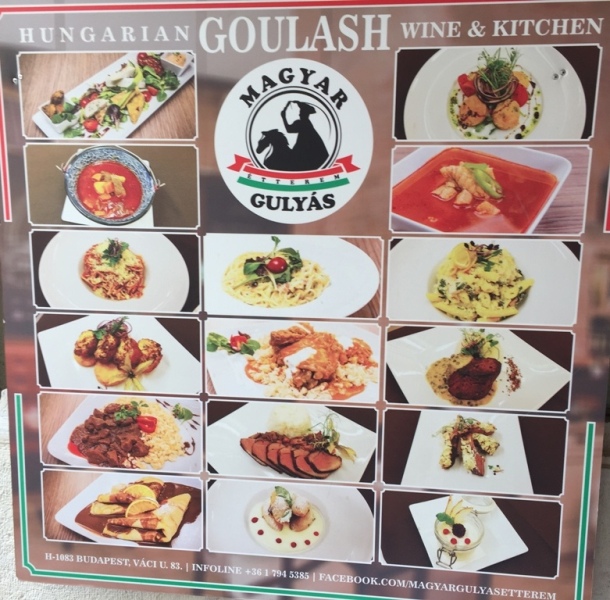
Sharon had an excellent caesar salad and I, of course, Goulash.
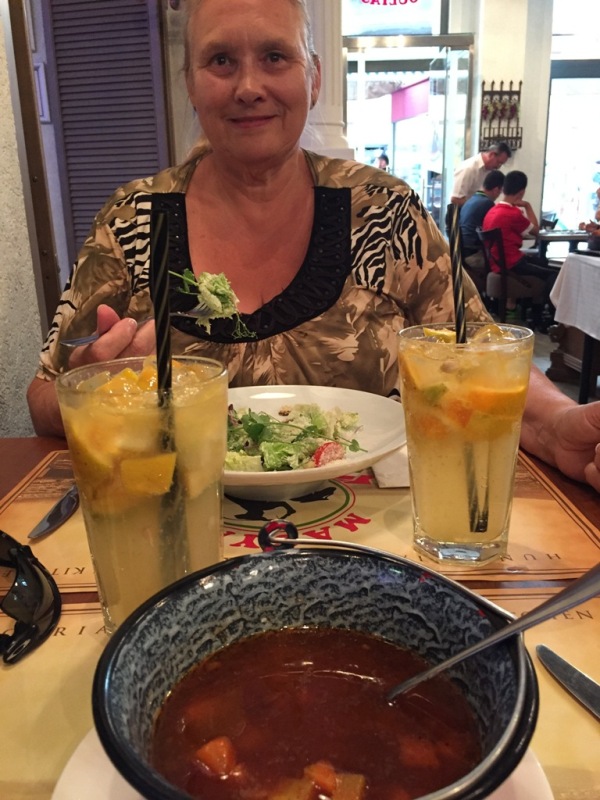
Can't remember the name of the dessert we shared...yes, shared. For those who know me I am not a good "sharer" of food, but I did this time.
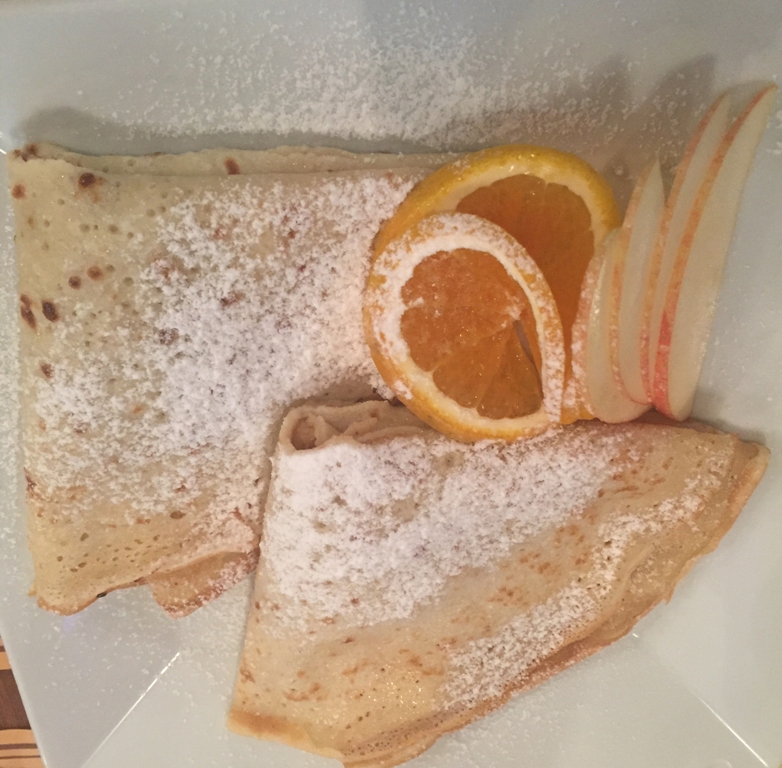
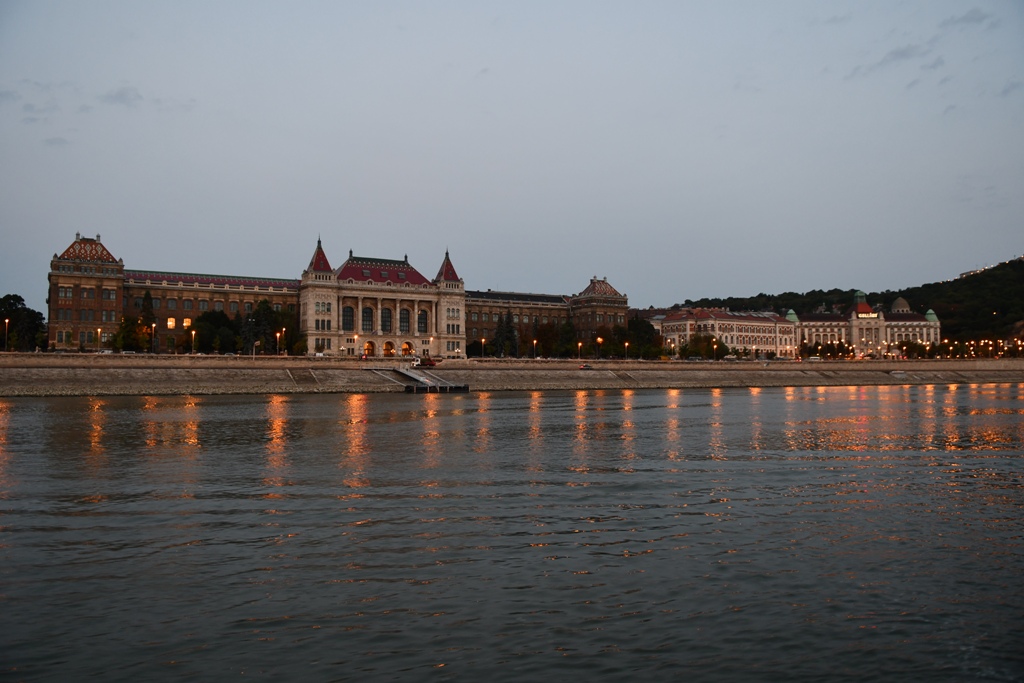
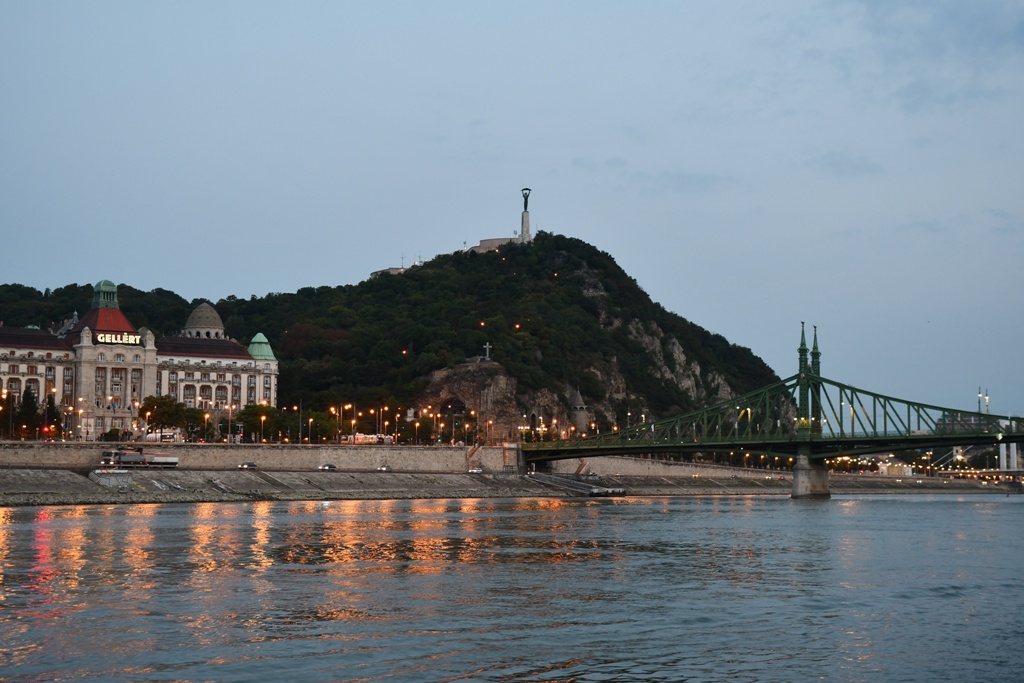
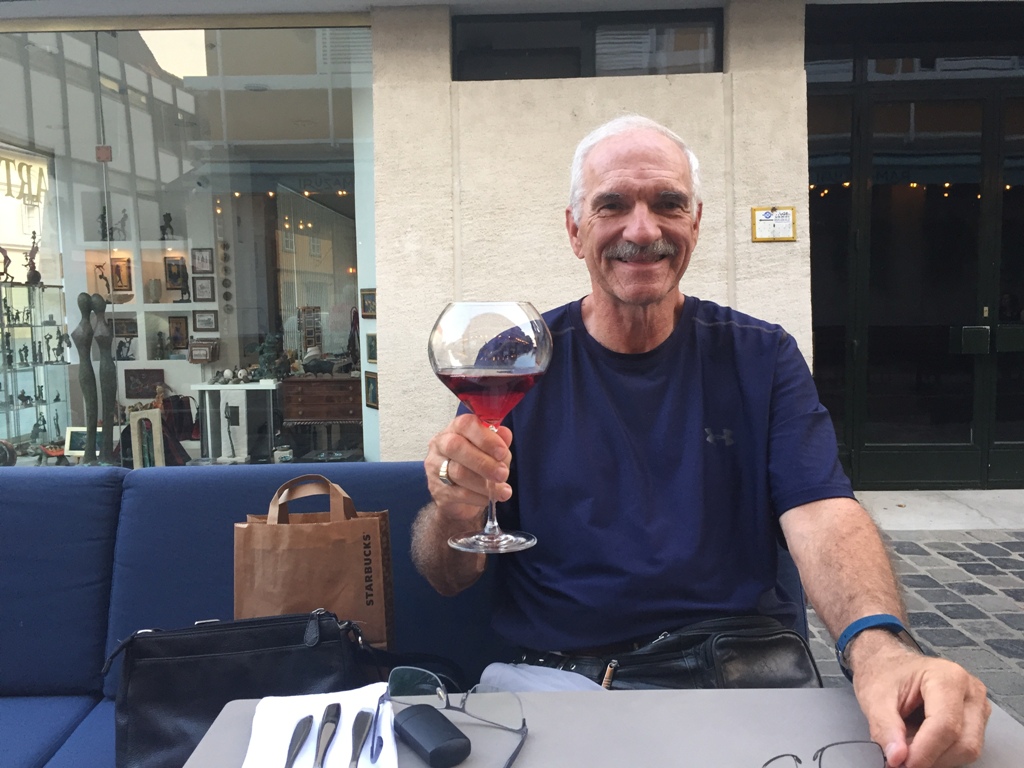

Back to Passage to Eastern Europe click here
.jpg)
.jpg)
.jpg)
.jpg)
.jpg)




